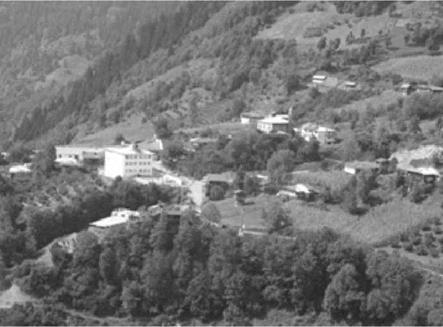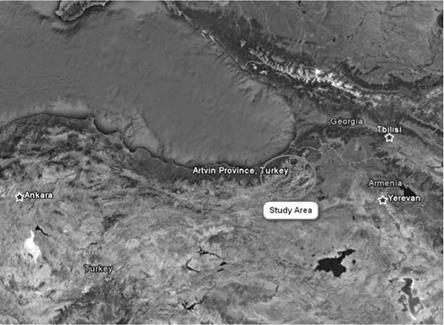Mustafa Fehmi TUrker, Inci Zeynep Aydin, and TUrkan Aydin
Abstract Ongoing altering interests of communities and diversified attitudes and behavior regarding forest resources have affected basic forest management policies. In this context, it seems necessary to provide sustainable economic and social development without endangering forest resources for today and future generations. “Sustainable forest management” is defined as operating forests and the biological diversity, fertility, ecological, social, and economic functions of forest lands in a sustainable way. Protected areas cover special, precious, and rare examples and species that are of utmost importance for science and education. For target management of protected areas, it is necessary to select an approach that includes sustainability and conservation of biological diversity. An important sustainability issue arises here. In addition, it is seen in most forest lands that villagers create a meaningful whole with protected areas. It should not be forgotten that the most important group with which Turkish forestry must communicate is forest villagers within the framework of sustainable forestry (Geray, 1998). Ecotourism is a kind of tourism that aims to raise the life standard of forest villagers, contribute to the national economy, and increase awareness of the structure of natural and cultural values. Ecotourism also provides sustainability of environmental resources and excludes activities aiming for short-term profits (Alkan et al., 2010), (Akilli, 2004), (Porsuk, 2000).
In this study, conducted in Camili Biosphere Reserve in Artvin; suggestions including the use of ecotourism and the importance of public relations for the development of forest villagers have been put forth to explain the relationship between protected areas and sustainable forestry management and to solve problems in the sustainability process of the protected areas. Forest villagers were selected according to a full-count method. Questionnaires included such variables
M. F. Turker • I. Z. Aydin • T. Aydin (*)
Department of Forest Economic, Artvin Coruh University, Artvin, Turkey e-mail: mft@artvin. edu. tr; iza_5561@hotmail. com; aturkana1@hotmail. com
N. Nakagoshi and J. A. Mabuhay (eds.), Designing Low Carbon Societies in Landscapes, Ecological Research Monographs, DOI 10.1007/978-4-431-54819-5_15, © Springer Japan 2014
as forest villagers’ personal information of every age group, socioeconomic effects of ecotourism activities, and destruction of the environment. These variables have been measured in terms of before and after ecotourism. In the process of evaluating the results, percentage, chi-square, paired t tests, and Wilcoxon analyses have been used (Aydin, 2010), (Demirayak, 2006).
Keywords Ecotourism • Forest protected areas • Forest villagers • Forestry management • Public relations • Sustainability
15.1 Introduction
Increased and diversified social demands because of rapid population growth, urbanization, and industrialization are changing people’s attitudes about environment and natural resources. As a result of this process, the importance of ecological and environmental functions of nonwood forest resources is increasing. This change, in turn, brings about the development of a contemporary philosophy of utilization of forest resources in accordance with principles of sustainability and multidimensional utilization.
Forest ecosystems are in the focal point of the sustainable development process. The basic element of this process is human, and all other productions and utilities, especially raw wood materials, depend on humans.
The changes occurring in economic, political, cultural, technological, and environmental fields throughout the world have necessitated a review of national development policies and required a multidimensional approach such as ecotourism to develop rural areas by taking changed tourism demands into consideration.
Ecotourism is a type of tourism activity that safeguards environmental protection and prioritizes the well-being and prosperity of the region’s people. As opposed to the generally perceived tourism definition, it is regarded as a sustainable and most effective way of natural conservation. Other types of tourism activities can also be evaluated as sustainable and fundamentally linked to societies whose main agenda is to keep green environments as is; however, the main object of ecotourism should be to preserve biological diversity.
Dasenbrock (2002), in his article titled “The Pros and Cons of Ecotourism in Costa Rica,” described ecotourism as the world’s largest and fastest growing service industry. However, he also mentioned some ups and downs of ecotourism in developing countries.
Ecotourism is an ideal type of touristic activity to help bolster both economic development and environmental protection. However, there are numerous examples around the world disclosing the situation is well outside what has long been intended or expected to be. Those examples that have not been properly managed
|
Fig. 15.1 View of Camili Village in research area. (Photograph from Aydin 2010) |
can unintentionally yield more adverse effects than those of mass tourism activities (Keszi 1998).
The study area of this study, Camili Basin, is 35 km from the district center on the Georgia border of Borcka district of Artvin province. In the north, all streams in the Camili Basin, which is surrounded by the Turkey-Georgia border, flow toward the other side of the border. The abundance of water resources attracts attention in the entire Camili basin (villages, hamlets, plateaus). As agricultural areas are limited and the area is mostly rainy, irrigated farming is not usual. High mountains surrounding the basin from the east, south, and west provide a natural border and isolate the region geographically. In the basin, which has a hilly structure, the elevation increases from 350 m (Camili Village) to 3,414 m (climax of Kackar). Camili is reached through Cankurtaran Strait, which is at 1,870 m. Camili Village located in the center, and five villages in the nearby basin are together called Macahel. Other villages included in the project along with Camili Village are the Dtizenli, Efeler, Kayalar, Maral, and Ugur villages (Fig. 15.1).
This study is based on the GEF-II Ecotourism Project that is being applied in Camili Biosphere Reserve, an area in the Borcka district of Artvin Province that is adjacent to Georgia (Fig. 15.2).
|
Fig. 15.2 Artin-Borcka-Camili biosphere reserve area, Turkey |





